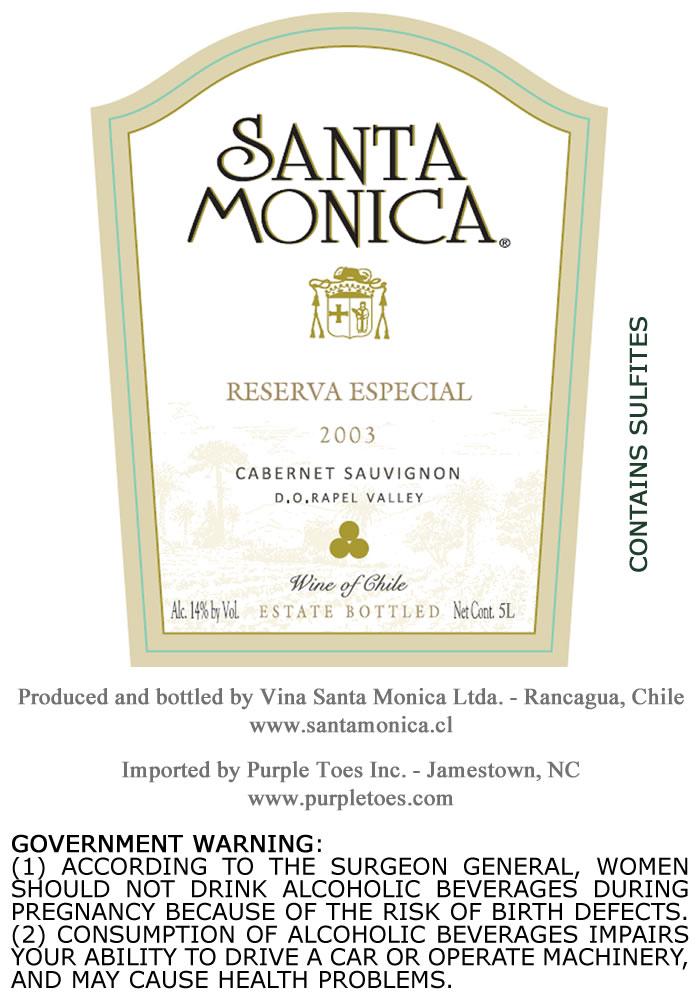2003 Rapel Valley Cabernet Sauvignon
Santa Monica Reserva Especial is a captivating Cabernet Sauvignon from the esteemed Rapel Valley, showcasing the rich and sophisticated characteristics of this varietal. In the glass, its deep red hue draws you in, hinting at its complexity. The wine boasts a full-bodied profile, offering a delightful balance of vibrant acidity and intensity of fruit that is both expressive and alluring. With noticeable tannins that provide structure, this wine delivers a mouthwatering experience that lingers on the palate. It is expertly crafted, ensuring a smooth and harmonious finish, making it a fantastic choice for those seeking a refined and enjoyable red wine. A true representation of the rich terroir of the Rapel Valley, this vintage from 2003 stands out as a remarkable selection for wine enthusiasts and casual drinkers alike.
Santa Monica Reserva Especial is a captivating Cabernet Sauvignon from the esteemed Rapel Valley, showcasing the rich and sophisticated characteristics of this varietal. In the glass, its deep red hue draws you in, hinting at its complexity. The wine boasts a full-bodied profile, offering a delightful balance of vibrant acidity and intensity of fruit that is both expressive and alluring. With noticeable tannins that provide structure, this wine delivers a mouthwatering experience that lingers on the palate. It is expertly crafted, ensuring a smooth and harmonious finish, making it a fantastic choice for those seeking a refined and enjoyable red wine. A true representation of the rich terroir of the Rapel Valley, this vintage from 2003 stands out as a remarkable selection for wine enthusiasts and casual drinkers alike.




